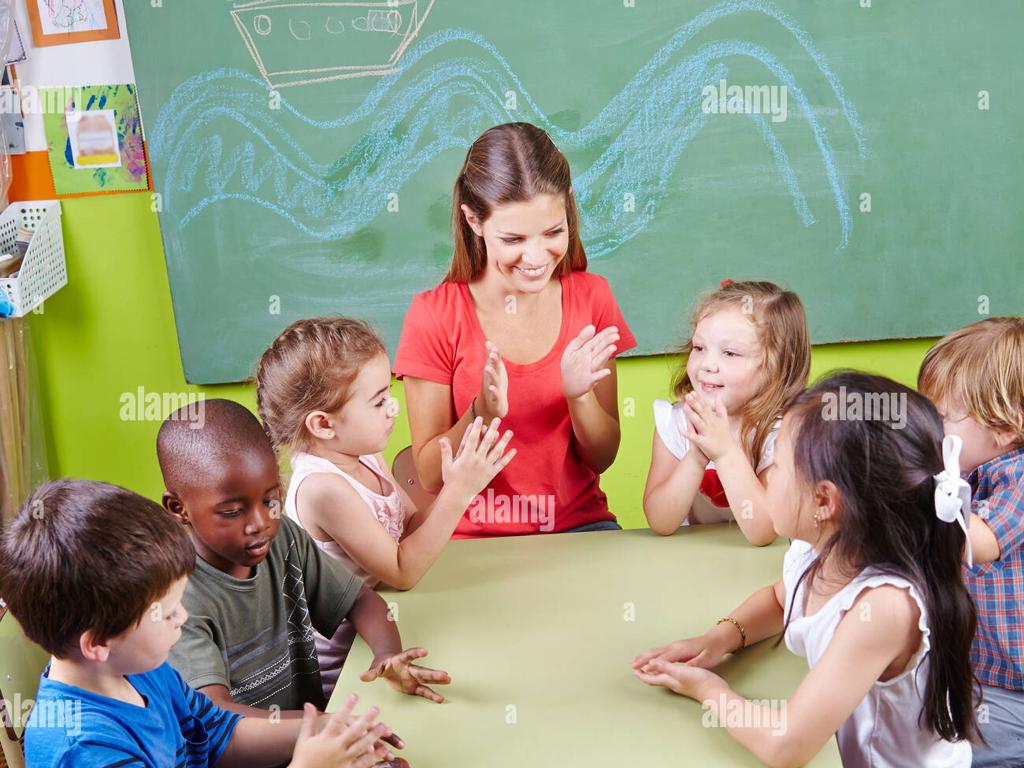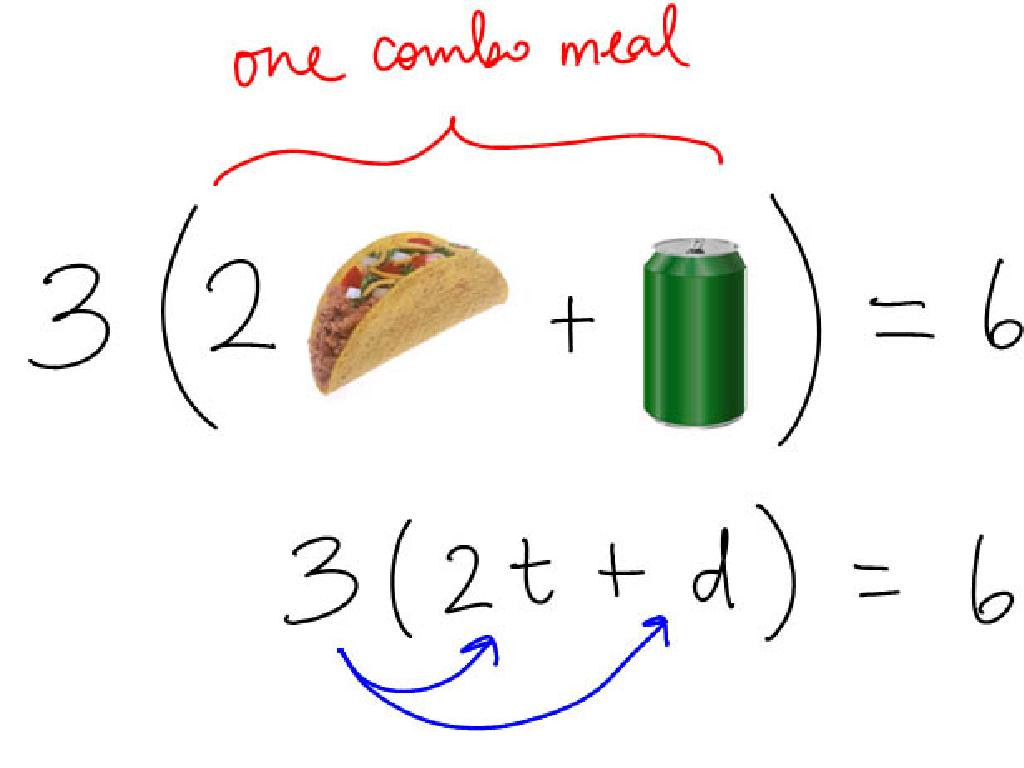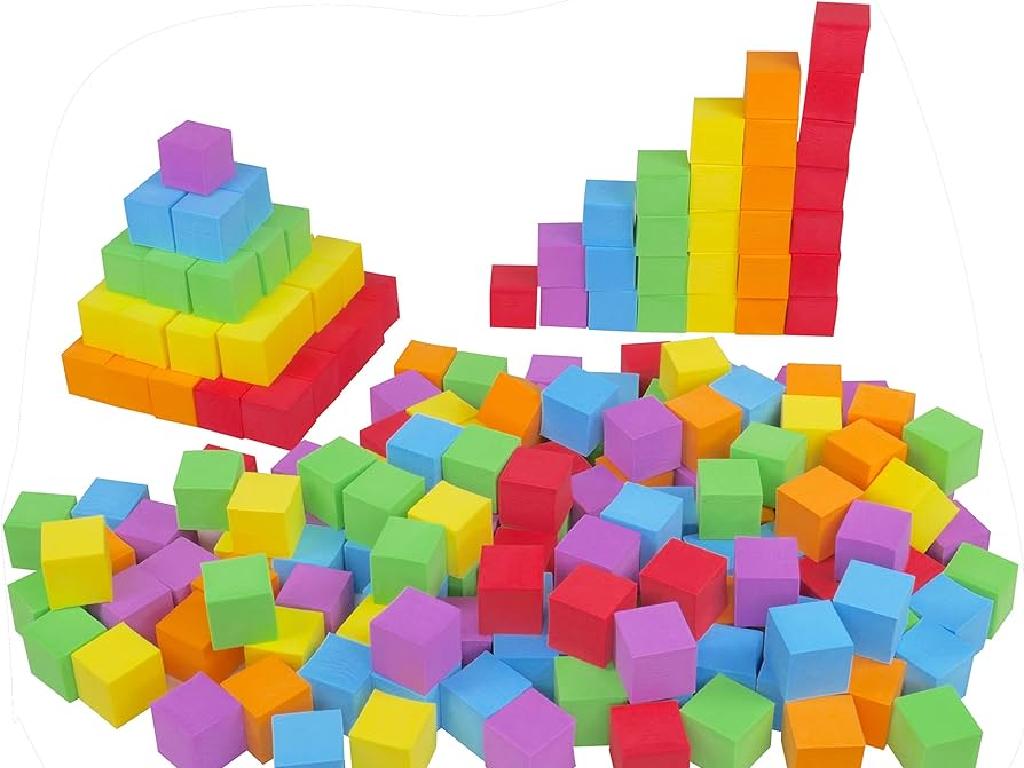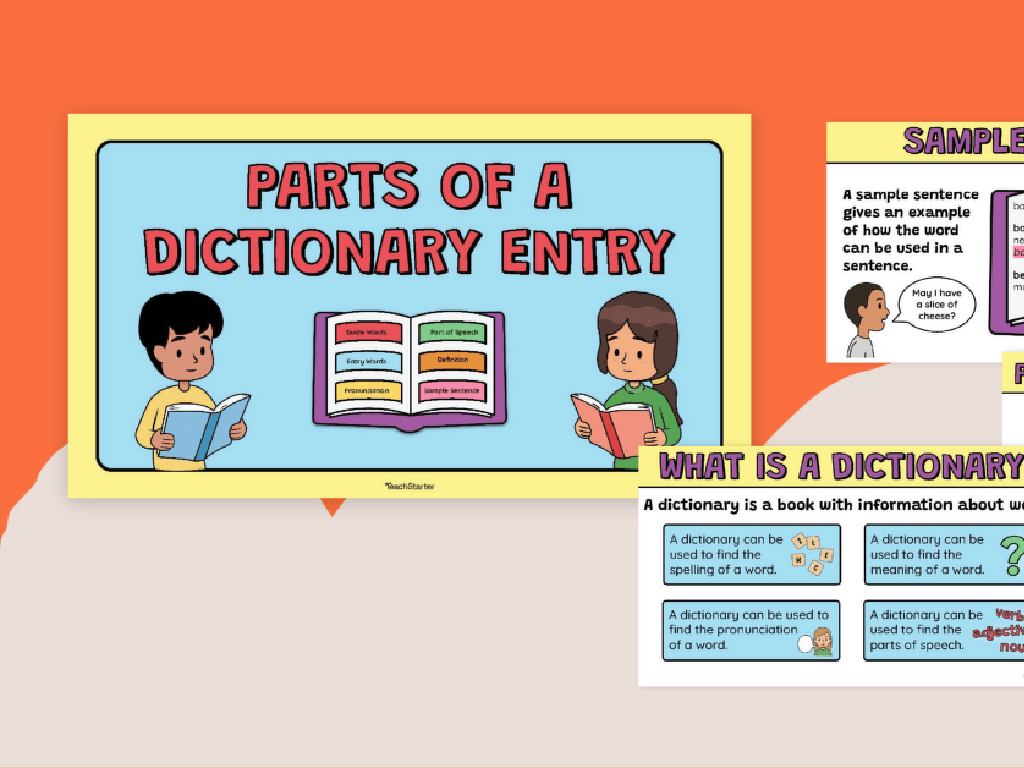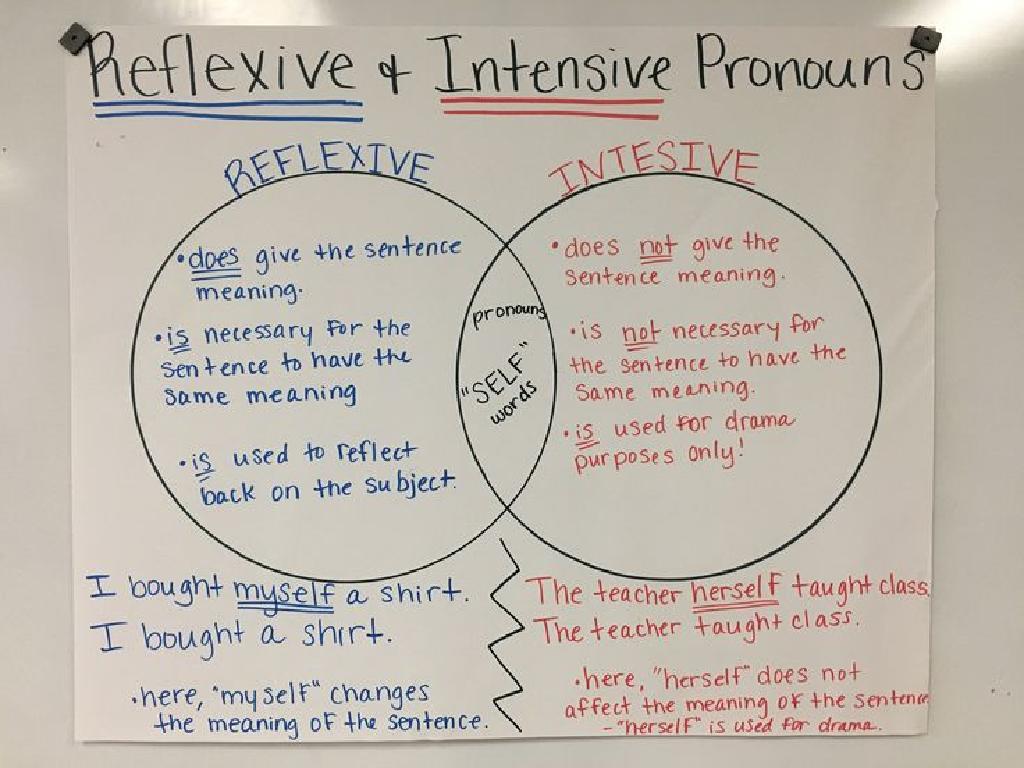Hot And Cold
Subject: Science
Grade: Kindergarten
Topic: Comparing
Please LOG IN to download the presentation. Access is available to registered users only.
View More Content
Exploring Hot and Cold
– What feels hot or cold?
– Sun feels hot, ice feels cold
– Hot and cold are temperatures
– Hot things can burn, cold can freeze
– Comparing hot and cold items
– Soup is hot, ice cream is cold
– Temperature in our daily lives
– We dress up according to the weather
|
This slide introduces the concept of temperature to Kindergarten students by exploring the ideas of hot and cold. Begin by asking the students to think of examples of hot and cold items, which will help them relate to the concept through their own experiences. Explain that temperature tells us how hot or cold something is and it’s a way to compare things in science. Discuss safety around hot items and the comfort of cold items, like enjoying a warm soup or a cold ice cream. Finally, tie the concept to everyday life by talking about dressing for the weather. Encourage the children to share their own experiences with hot and cold.
What is Temperature?
– Temperature measures hot or cold
– Thermometers measure temperature
– A tool with numbers and red/blue liquid
– Hot things make us feel warm
– Like when we drink warm milk
– Cold things make us feel cool
– Like eating a cold ice-cream
|
This slide introduces the concept of temperature to Kindergarten students. Begin by explaining that temperature is a way to tell if something is hot or cold, like when they touch ice (cold) or when they are out in the sun (hot). Show them a thermometer and explain that it is a special tool we use to find out exactly how hot or cold something is. Use simple, relatable examples like warm milk to explain ‘hot’ and ice-cream to explain ‘cold’. Encourage the children to think of more examples of hot and cold things they have experienced.
Hot Things Around Us
– The sun warms our Earth
– The sun is like a big heater for the whole planet.
– Hot cocoa is a yummy winter drink
– We drink hot cocoa to feel warm when it’s cold.
– Fire is hot and dangerous
– Fire can cook food but can also burn, so we stay back.
– Always be careful with hot things
|
This slide introduces the concept of heat to Kindergarten students by providing relatable examples. Emphasize the sun’s role in warming the Earth and how it’s essential for life. Discuss how hot cocoa is a treat in winter that keeps us warm, and use this to explain that heat provides comfort. Explain that fire is a source of heat but also poses dangers, highlighting the importance of safety. Encourage the children to think of other hot things and discuss how we must be careful around them. Use this opportunity to instill a basic understanding of temperature and safety.
Exploring Cold Things
– Snowflakes: cold winter wonders
– Snowflakes are tiny ice crystals from the sky.
– Ice cream: a yummy cold treat
– Ice cream is delicious but melts when warm.
– Refrigerators: they keep food fresh
– Refrigerators use cool air to stop food from spoiling.
|
This slide introduces children to the concept of cold by using familiar and relatable examples. Discuss how snowflakes are unique and cold, forming intricate patterns as they fall during winter. Explain that ice cream, a favorite treat, needs to be kept cold to maintain its solid form, otherwise it melts. Highlight the importance of refrigerators in preserving food by keeping it cold. Engage the students by asking if they have ever touched snow, eaten melting ice cream, or helped put groceries away in the fridge. These interactions will help them understand the concept of cold through direct experiences.
Hot or Cold?: Learning Temperature
– Look at pictures together
– Decide if it’s hot or cold
– Hot things warm us up
– Examples: Sun or fire is hot because it warms us
– Cold things cool us down
– Examples: Ice or snow is cold because it cools us
|
This slide is aimed at helping Kindergarten students understand the concept of temperature through visual aids. Show them a series of pictures depicting various objects and scenarios, and guide them to categorize each as ‘hot’ or ‘cold’ based on the effects those objects or scenarios have on our bodies. Explain that things like the sun or fire can make us feel warm, so we call them ‘hot’. Conversely, items like ice cream or snow make us feel chilly, so we say they are ‘cold’. Encourage the children to think about how their bodies feel in different situations to determine if they are experiencing something hot or cold. This activity will help them associate the sensations of warmth and coolness with the appropriate temperature type.
Safety with Hot and Cold
– Be careful with hot items
– Stoves and irons can burn
– Dress warmly in cold
– Coats and mittens keep us cozy
– Ask adults for help
– Adults know if things are too hot or cold
– Safety keeps us healthy
|
This slide is aimed at teaching Kindergarten students about the importance of safety when dealing with hot and cold temperatures. Emphasize that hot items like stoves and irons can cause burns and they should not touch them. Explain the importance of wearing appropriate clothing like coats, hats, and mittens in cold weather to prevent getting sick. Encourage them to always seek assistance from an adult when they need to check the temperature of something, as adults can help them understand what is safe to touch. Reinforce the idea that being cautious with temperature helps us stay safe and healthy. Include examples of hot and cold items they might encounter daily and discuss what safe behavior looks like in each scenario.
Class Activity: Temperature Touch
– Touch and feel temperature
– Use senses to explore
– Discuss hot and cold objects
– Examples: Ice pack (cold), warm cloth (hot)
– Share feelings about each object
|
This activity is designed to engage students in a hands-on learning experience about temperature. Provide a variety of safe objects with different temperatures for the children to touch, such as an ice pack and a warm cloth. Encourage them to use their sense of touch to feel the temperature and describe it as ‘hot’ or ‘cold’. Facilitate a discussion where each child shares how touching the object made them feel, using descriptive words. Possible activities: 1) Sorting objects by temperature, 2) Matching game with temperature words, 3) Drawing pictures of things that are hot or cold, 4) Singing a song about hot and cold, 5) Storytime with a book about temperature. Ensure safety by supervising the children at all times and by using objects that are safe to touch.
Wrapping Up: Hot and Cold
– Great job exploring temperature!
– Temperature measures hot or cold
– Is it like a warm blanket or a snowball?
– Always stay safe around extremes
– Don’t touch the stove or ice without an adult
– Ask for help with hot or cold items
– If you re unsure, adults can help!
|
Today’s lesson was all about understanding the concepts of hot and cold, which are ways to describe temperature. Reinforce the idea that temperature is a measure of how things feel to us, and it’s important to recognize when things are too hot or too cold for safety. Encourage the children to always practice safety by asking for help from an adult when dealing with hot objects like a stove or cold items like ice. This will help prevent accidents and teach them to be cautious. Great job on making today’s lesson interactive and engaging for the students!

